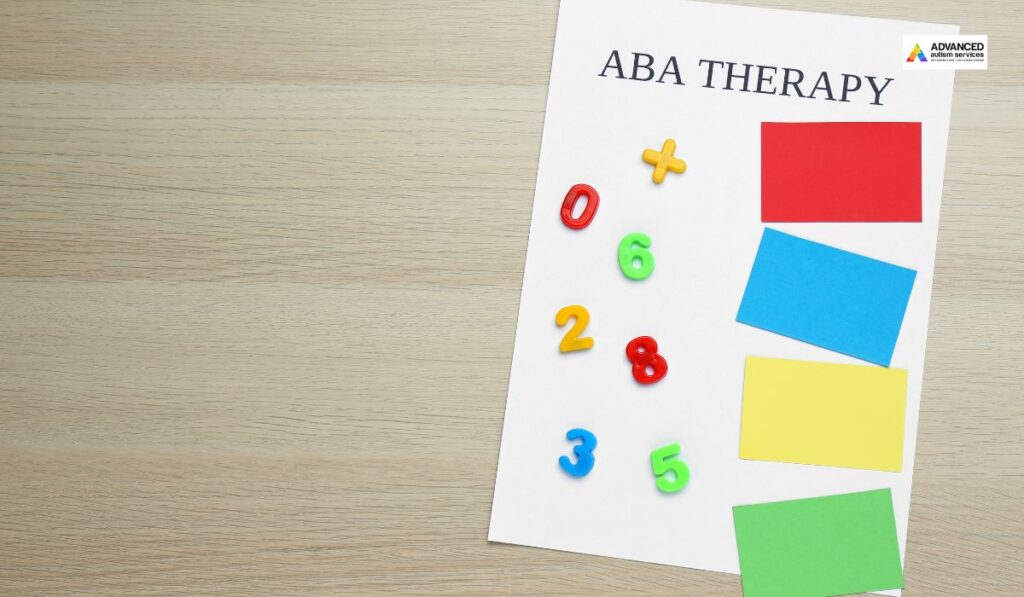Applied Behavior Analysis (ABA) therapy is a widely used and effective approach for individuals with autism spectrum disorder (ASD) and other developmental disabilities. A key component of ABA is the use of reinforcement and punishment strategies to modify behavior. Positive and negative punishment are two fundamental concepts within this therapeutic framework, each serving a distinct purpose in shaping behavior. This article aims to delve into the intricacies of positive and negative punishment in ABA therapy, exploring their definitions, applications, and potential implications.
Positive Punishment:
Positive punishment involves the presentation of an aversive stimulus following an undesired behavior, with the intention of decreasing the likelihood of that behavior occurring again. It’s crucial to understand that “positive” in this context does not denote something beneficial or pleasant. Instead, it refers to the addition or presentation of a stimulus.
In ABA therapy, positive punishment might include actions such as reprimands, time-outs, or the addition of extra chores. For example, if a child engages in disruptive behavior during a class, the teacher might reprimand them, providing a consequence intended to decrease the occurrence of the disruptive behavior.
Critics of positive punishment argue that it can lead to unintended side effects, such as increased aggression or the development of negative emotional associations with the therapist or learning environment. Therefore, its implementation requires careful consideration and monitoring.
Negative Punishment:
On the other hand, negative punishment involves the removal of a reinforcing stimulus to decrease the likelihood of a behavior. Unlike positive punishment, negative punishment focuses on the subtraction or removal of a stimulus.
In ABA therapy, negative punishment might involve taking away privileges or withdrawing attention in response to unwanted behavior. For instance, if a child throws a tantrum to gain attention, a therapist might implement negative punishment by temporarily ignoring the behavior, thereby reducing the likelihood of future tantrums.
Negative punishment is generally regarded as a less intrusive and potentially more socially acceptable approach than positive punishment. However, its effectiveness may vary depending on individual differences and the context in which it is applied.
Considerations for ABA Therapists:
Individualized Approach:
ABA therapists must tailor their approach based on the unique needs and characteristics of each individual. What works effectively for one person may not be suitable for another.
Monitoring and Assessment:
Continuous assessment of the effectiveness of punishment strategies is essential. If a particular method is not yielding the desired results or is causing adverse reactions, adjustments should be made promptly.
Ethical Considerations:
ABA therapists adhere to a strict code of ethics that emphasizes the well-being and dignity of the individual receiving therapy. It is crucial to ensure that punishment strategies are ethically sound and align with the principles of ABA.
Balancing Reinforcement and Punishment:
ABA therapy places significant emphasis on reinforcement strategies, such as positive reinforcement, to encourage desired behaviors. The judicious use of punishment should be balanced with reinforcement to create a comprehensive behavior modification plan.
Expanding on the Significance of Reinforcement:
In the realm of ABA therapy, positive reinforcement stands out as a powerful tool for encouraging and sustaining desired behaviors. Positive reinforcement involves providing a rewarding stimulus immediately following a target behavior, making it more likely for that behavior to be repeated. This contrasts with punishment strategies that focus on deterring undesirable behaviors.
Therapists often integrate positive reinforcement techniques, such as praise, tokens, or tangible rewards, to reinforce positive behaviors. For instance, if a child completes a task independently, the therapist may offer verbal praise or a small reward, reinforcing the likelihood of the child repeating the task in the future.
One of the key principles of ABA is the emphasis on reinforcing desirable behaviors rather than solely relying on punishment for unwanted behaviors. This approach fosters a positive and supportive therapeutic environment, promoting the individual’s motivation to engage in appropriate behaviors.
Addressing Challenges in Punishment Strategies:
While punishment strategies can be effective in behavior modification, they are not without challenges. ABA therapists must navigate potential pitfalls to ensure the ethical and beneficial application of punishment within the therapy context.
Generalization Issues:
Ensuring that behavior changes generalize across various settings and with different individuals is a common challenge in ABA therapy. Therapists must work to make sure that the learned behaviors are not confined to specific situations or interactions.
Long-term Effects:
The long-term impact of punishment strategies requires careful consideration. ABA therapists must be vigilant in monitoring for any adverse effects on emotional well-being, social interactions, or the overall therapeutic relationship.
Communication and Collaboration:
Open communication and collaboration between ABA therapists, individuals receiving therapy, and their families are essential. Transparent discussions about the rationale behind the use of punishment strategies, potential side effects, and alternative approaches can enhance the effectiveness of therapy.
Data-driven Decision Making:
ABA therapy places a strong emphasis on data collection and analysis. Therapists systematically collect data to evaluate the effectiveness of interventions, allowing for evidence-based decision-making and adjustments to the therapeutic plan as needed.
Future Directions in ABA Therapy:
As the field of ABA therapy continues to evolve, ongoing research and advancements contribute to refining and expanding the therapeutic toolkit. The focus remains on creating individualized, evidence-based interventions that address the diverse needs of individuals with autism and other developmental disorders.
In the future, ABA therapy may benefit from further research on the neurobiological underpinnings of behavior and the development of more personalized and targeted interventions. Additionally, ongoing efforts to enhance the cultural competence of ABA practitioners and promote inclusivity in therapeutic approaches are vital for meeting the diverse needs of the individuals seeking these services.
Conclusion
Positive and negative punishment are integral components of ABA therapy, each serving a unique role in behavior modification. ABA therapists must carefully consider the individual needs of their clients, continually assess the effectiveness of their interventions, and adhere to ethical guidelines. Striking a balance between reinforcement and punishment is key to fostering positive behavior change while minimizing potential negative side effects. As the field of ABA continues to evolve, ongoing research and clinical experience will contribute to refining and optimizing these behavior modification techniques for individuals with autism and other developmental challenges.
For more information on ABA therapy or to connect with experienced professionals who can guide you through the process, please visit Advanced Autism Services. Your journey towards understanding and implementing effective strategies for positive behavior change begins with a supportive and knowledgeable team.
FAQs
What is the fundamental difference between positive and negative punishment in ABA therapy?
Positive punishment involves adding an aversive stimulus to decrease undesired behavior, while negative punishment entails removing a reinforcing stimulus for the same purpose.
Can you provide examples of positive punishment in ABA therapy?
Yes, examples include reprimands, time-outs, or assigning additional chores as consequences for undesired behaviors.
How does negative punishment work in ABA therapy?
Negative punishment involves the removal of privileges or attention to decrease the likelihood of a behavior. For instance, a therapist might ignore a tantrum to discourage attention-seeking behavior.
Are there potential side effects of positive punishment?
Critics argue that positive punishment may lead to unintended side effects, such as increased aggression or negative emotional associations. Monitoring and careful consideration are essential in its implementation.
Why is an individualized approach crucial in ABA therapy?
ABA therapists must tailor their strategies based on each individual’s unique needs, recognizing that what works for one person may not be suitable for another.
How do ABA therapists address ethical considerations in punishment strategies?
ABA therapists adhere to a strict code of ethics, ensuring punishment strategies align with the principles of ABA and prioritize the well-being and dignity of the individual.
What is the significance of balancing reinforcement and punishment in ABA therapy?
Balancing reinforcement and punishment helps create a comprehensive behavior modification plan, promoting positive behavior change while minimizing potential negative side effects.
How does positive reinforcement differ from punishment in ABA therapy?
Positive reinforcement involves providing a rewarding stimulus following a desired behavior to increase the likelihood of its repetition, focusing on encouraging positive behaviors rather than deterring unwanted ones.
What challenges do ABA therapists face in punishment strategies?
Challenges include ensuring behavior changes generalize across settings, monitoring long-term effects on emotional well-being, fostering communication and collaboration, and making data-driven decisions to adjust interventions.
What is the future direction of ABA therapy?
ABA therapy continues to evolve with ongoing research and advancements, emphasizing individualized, evidence-based interventions. Future directions include exploring neurobiological underpinnings, personalized interventions, and enhancing cultural competence in therapeutic approaches.
How does positive reinforcement contribute to behavior modification in ABA therapy?
Positive reinforcement involves providing rewards like praise, tokens, or tangible items immediately following a desired behavior, encouraging the individual to repeat the behavior in the future. It fosters a positive and supportive therapeutic environment.
What challenges are associated with punishment strategies in ABA therapy?
ABA therapists must address challenges such as generalization issues, ensuring that behavior changes extend across various settings and individuals. Additionally, they need to monitor potential long-term effects on emotional well-being and social interactions.
How does ABA therapy emphasize data-driven decision-making?
ABA therapy places a strong emphasis on systematic data collection and analysis. Therapists use collected data to evaluate the effectiveness of interventions, enabling evidence-based decision-making and adjustments to the therapeutic plan as needed.




